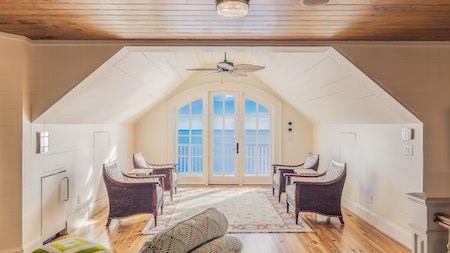If you pay your home loan off over the standard 20-year term, you will often pay more in interest than the capital you are borrowing.
This is according to Meyer de Waal, a conveyancing attorney in Cape Town, who conducted a study on home loan repayments - How to save thousands of rands on home loan repayments and FLISP subsidies.
“If you are a first-time homeowner, you can save thousands of rands by having the proceeds of a FLISP policy paid into your home loan account, reducing the capital as a once-off payment,” says de Waal.
“Not many first-time homeowners are aware that they can apply retrospectively for a FLISP subsidy if they have not previously applied for the subsidy.”
FLISP
FLISP stands for the government’s Finance Linked Individual Subsidy Programme, which is paid out by the National Housing Finance Corporation (NHFC). To qualify for this subsidy, you must be a first-time home buyer with dependents who have never benefitted from a government scheme. In addition, you must have a gross household monthly income ranging from R3 501 to R22 000.
From April 2022, the FLISP application process was de-linked from only finance approved through a traditional home loan. This means that any home buyer/owner can now qualify for a first-time buyer FLISP subsidy if they have the finance to buy a property in the form of:
- The beneficiary's provident/pension fund loan.
- A community-based or co-operative savings scheme, for example, a stokvel.
- The Government Employees Housing Scheme.
- Any other employer-assisted housing scheme.
- An unsecured loan.
- An instalment sale or rent-to-own agreement.
Repayments
If you are paying off your R605 480 home loan over a 20-year term at a prime lending rate of 10.5%, the interest you need to pay back will add an extra R845 317 to the total home loan repayment.
Therefore you will end up paying back R1 450 790 to the bank over the 20-years repayment term at a home loan interest rate of 10.5%.
If the interest rate is 11.2%, an extra R914 275 will be added to the home loan, making the total payment R1 519 755.
If a FLISP subsidy of around R89 000 is deducted from the capital, reducing the interest payable to R4393 340, the total payment is now just R1 098 820.
"We advise the homeowners to continue with their current monthly repayments and pay off the home loan as quickly as possible. This shaves off close to seven years on the 20-years repayment term and leads to savings of around R420 000,” says de Waal.
Negotiate interest rates
Many homeowners are trapped in paying back their home loans at the high-interest rates charged when their mortgages were granted.
If your finances have improved, you may not be aware that you can apply to your bank to consider reducing the interest rate on your home loan.
Once the FLISP subsidy has been paid into your home loan, your financial situation will substantially improve. In addition, the risk to the bank is reduced, so the bank may consider a reduction in your home loan interest rate.
This will result in further savings, especially if you continue to repay your home loan instalments at the initially agreed monthly rate.
“The opportunity to renegotiate a lower interest rate is open to all homeowners," says de Waal. "It's essential to make use of such opportunities as the ever-increasing interest rates are adding more pressure to homeowners' budgets.
“If your bank doesn’t want to reduce your current high-interest rate despite improvements in your financial situation and credit score and the value of your property, you should consider switching your home loan to another bank that will grant you a lower home loan interest rate. This will enable you to save thousands of rands and create wealth for you and your dependents.”
Writer: Sarah-Jane Meyer




